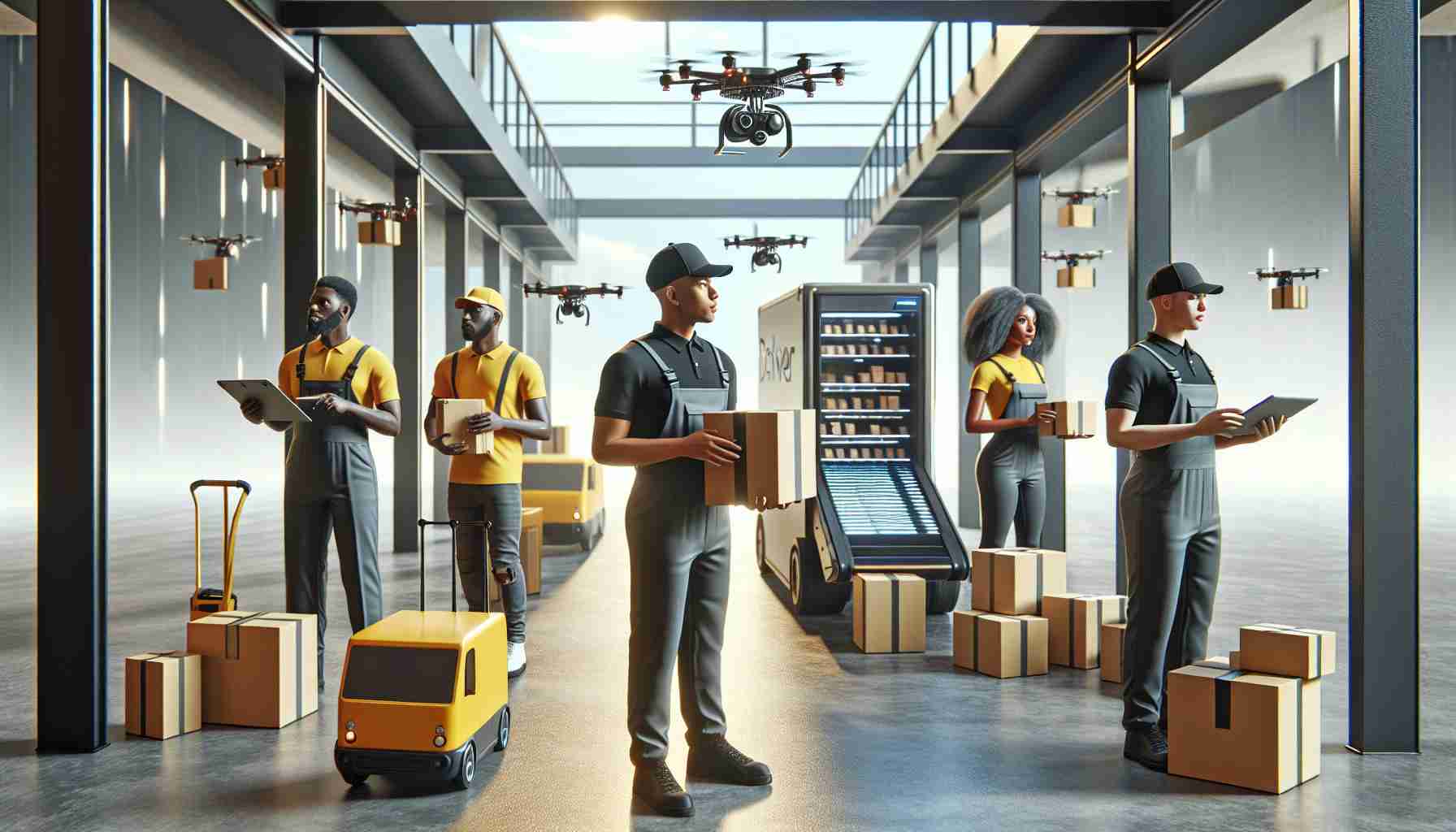Autonomous Vehicles Transforming Courier Services in China
In an era where efficiency is paramount, Chinese couriers are significantly shifting towards autonomous delivery vehicles. This trend has surged in the past year, particularly as they tackle labor shortages during high-demand seasons like the Chinese New Year.
These unmanned delivery vans have demonstrated remarkable potential, reportedly reducing transfer costs by as much as 60%. A corporate insider highlighted that this technology not only enhances delivery speed but also stabilizes service quality during peak periods, which are crucial for events like the Double 11 shopping spree.
For instance, a courier hub in Hangzhou utilized 30 self-driving vans last year, which dramatically decreased the need for temporary staff, cutting it down by 80%. Additionally, the ZTO Express center is reaping the benefits of eight autonomous vehicles, which streamline package transport and significantly reduce sorting times.
Further innovations have emerged with various new brands launching their unmanned delivery options since 2023. Courier services are now evaluating these emerging technologies to identify the best solutions for their logistics needs.
Despite the promising advancements, challenges remain. Factors such as unexpected parking situations, curious onlookers causing accidents, and occasional signal loss are hurdles that the industry must navigate. With ongoing efforts to integrate technology and legislation, the future of autonomous delivery in China is on the brink of a significant transformation.
Broader Implications of Autonomous Delivery Vehicles in China
The shift towards autonomous delivery vehicles in China is not merely a technological advancement; it signals a fundamental transformation in societal and economic structures. As courier services embrace this innovation, we witness a broader paradigm shift in labor dynamics. With automation effectively reducing the reliance on human couriers, the workforce will likely face significant disruptions, necessitating retraining and reskilling programs to prepare employees for new roles within an increasingly automated economy.
Culturally, this transition reflects a change in consumer expectations. Shoppers increasingly demand faster, more efficient services, which autonomous vehicles can satisfy. This cultural shift prioritizes convenience and immediacy, further entrenching the expectation for technological solutions in daily life.
On a global scale, China’s push towards autonomous delivery has economic ramifications. As Chinese companies lead in this domain, there is potential for increased investment and competition, prompting other nations to accelerate their own logistics innovations. The global logistics market, currently valued at over $4 trillion, could see transformative changes shaped by China’s advancements in automation.
However, the environmental implications are equally critical. While autonomous vehicles have the potential to optimize routes and reduce emissions, the increased volume of packages could counteract these benefits if not managed carefully. The challenge remains to strike a balance between innovation and sustainability.
Ultimately, as we look to the future, the integration of autonomous vehicles in courier services may redefine how we think about delivery logistics, work, and consumption. The trajectory of this transformation will require careful navigation of societal, economic, and environmental considerations in the years to come.
Revolutionizing Delivery: The Rise of Autonomous Vehicles in China’s Courier Services
Autonomous Vehicles Transforming Courier Services in China
The logistics landscape in China is undergoing a significant transformation with the rapid adoption of autonomous vehicles in courier services. As businesses aim to enhance operational efficiency, especially during peak seasons, these unmanned delivery vehicles are proving to be a game-changer.
Key Innovations and Features
1. Cost Efficiency: Recent reports indicate that the implementation of autonomous delivery vehicles can reduce operational costs by up to 60%. This cost reduction is crucial during high-demand periods, allowing courier services to maintain profitability while meeting customer expectations.
2. Enhanced Delivery Times: Autonomous vehicles are engineered to optimize delivery routes and minimize delays, significantly improving service speed. This feature is particularly beneficial during high-demand events like the Double 11 shopping festival, where consumer demand peaks.
3. Labor Optimization: The introduction of self-driving vans has allowed courier companies to streamline their workforce. For instance, a courier hub in Hangzhou reported an 80% reduction in the need for temporary staff, thereby decreasing labor-related costs while ensuring efficient operations.
4. Real-World Implementation: Companies like ZTO Express are already reaping the benefits of autonomous vehicles. Utilizing eight self-driving vans for package transport has led to streamlined logistics and reduced sorting times, showcasing the practical viability of this technology.
Trends and Market Analysis
The trend of utilizing autonomous delivery vehicles is gaining momentum, with various new brands entering the market since 2023. This expansion indicates a broader acceptance and interest in automated logistics solutions.
Companies are actively evaluating these technologies to determine which innovations will best address their unique logistics challenges. The trend aligns with the global movement towards automation and digital tools in the supply chain sector.
Limitations and Challenges
While the advantages of autonomous delivery vehicles are clear, several challenges need to be addressed:
– Navigation Issues: Unexpected parking situations can impede the path of self-driving vans, leading to delays in delivery schedules.
– Public Interaction: Curious onlookers have occasionally caused accidents involving autonomous vehicles, highlighting the need for public awareness and understanding of these technologies.
– Signal Reliability: Occasional signal loss can disrupt the navigation capabilities of unmanned vehicles, necessitating improved communication infrastructures.
Future Outlook
As the integration of technology and legislation progresses, the future of autonomous delivery in China looks promising. The ongoing developments aim to address the current challenges, ensuring safer and more reliable operations for unmanned vehicles.
Businesses in logistics and courier services are expected to continue investing in these technologies, as competition drives the need for more efficient and cost-effective solutions.
For further insights into the logistics sector and technological innovations, visit China’s Logistics Network.
In summary, the rise of autonomous vehicles in courier services not only presents a distinct competitive edge but also signifies a pivotal moment in the evolution of delivery systems in China. As technology continues to advance, the implications for the courier industry are vast and transformational.
